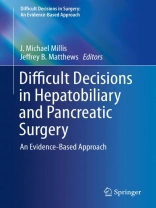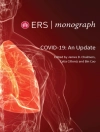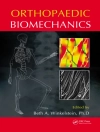This book is part of a series covering surgical specialties. The volumes are multi-authored, containing brief chapters, each of which are devoted to one or two specific questions or decisions within that specialty that are difficult or controversial. The volumes are intended as a current and timely reference source for practicing surgeons, surgeons in training, and educators that describe the recommended ideal approach, rather than customary care, in selected clinical situations.
Table des matières
Chapter 1: Finding and appraising the evidence: EBM and GRADE
Chapter 2: Is Surgery Indicated for Asymptomatic Giant Hepatic Hemangioma?
Chapter 3: What is the Best Surgical Method of Addressing Hepatic Hemangiomas?
Chapter 4: Which Diagnostic Modality is Best to Assess Benign Hepatic Tumors?
Chapter 5: Cystic Diseases of the Liver
Chapter 6: When Should You Operate on Major Hepatic Trauma?
Chapter 7: Surgical Treatment of Hepatocellular Carcinoma: Resection versus Transplantation
Chapter 8: Hepatic Epithelioid Hemangioendothelioma
Chapter 9: What is the Best Way to Screen Cirrhotic Patients for Hepatocellular Carcinoma in the United States?
Chapter 10: When is Laparoscopic Liver Resection Preferred Over Open Resection?
Chapter 11: Clinical Management of Pyogenic Liver Abscesses
Chapter 12: Which is better local therapy for HCC, RFA or TACE?
Chapter 13: When should patients withliver metastases from colorectal cancer receive chemotherapy?
Chapter 14: What is the best way to assess hepatic reserve prior to liver resection in the cirrhotic patient?
Chapter 15: Treatment Protocols for Small Hepatocellular Carcinoma (≤ 3cm): RFA or Resection?
Chapter 16: Which is the Better Predictor of Hepatic Reserve Prior to Liver Resection: MELD or the Child-Pugh Score?
Chapter 17: Early (<24 hr) or Delayed Cholecystectomy for Acute Cholecystitis?
Chapter 18: Primary Closure or T-tube Drainage after Open or Laparoscopic Common Bile Duct Exploration?
Chapter 19: Single-Incision or Multiport Laparoscopic Cholecystectomy
Chapter 20: Management of Recurrent Cholangitis
Chapter 21: Management of postoperative bile duct stricture
Chapter 22: Immediate or Delayed Repair for Bile Duct Injury Recognized Postoperatively?
Chapter 23: Management of Suspected Choledocholithiasis on Intraoperative Cholangiography
Chapter 24: Management of Incidentally Discovered Gallbladder Cancer
Chapter 25: Gallstone Ileus
Chapter 26: Surgery or Endoscopy for Bile Duct Strictures secondary to Chronic Pancreatitis?
Chapter 27: Routine or Selective Cholangiography for Elective Laparoscopic Cholecystectomy?
Chapter 28: When is bile duct resection indicated for biliary strictures in primary sclerosing cholangitis?
Chapter 29: Assessment of Bile Duct Tumors: Endoscopic vs Radiographic
Chapter 30: Management of Significant Hemobilia: Hepatic Artery Embolization or Stenting?
Chapter 31: The assessment of ductal margin in curative-intent surgery for perihilar Cholangiocarcinoma
Chapter 32: Management of early post-transplant portal vein thrombosis: results of interventional techniques versus surgical
Chapter 33: When should patients with bleeding esophageal varices undergo TIPS versus endoscopic therapy?
Chapter 34: Management of symptomatic portal hypertension: TIPS vs. medical management
Chapter 35: Should all hepatic arteriovenous fistulas be embolized?
Chapter 36: Early or Delayed Cholecystectomy in Acute Gallstone Pancreatitis
Chapter 37: Nutritional Support in Acute Necrotizing Pancreatitis
Chapter 38: Management of Symptomatic Pancreatic Pseudocyst
Chapter 39: Antibiotic Prophylaxis for Acute Necrotizing Pancreatitis
Chapter 40: Endoscopic or Minimally Invasive Debridement of Walled-off Pancreatic Necrosis?
Chapter 41: Surgical Debridement in Necrotizing Pancreatitis
Chapter 42: Surgery or Endotherapy for Large Duct Chronic Pancreatitis
Chapter 43: Pancreatic Head Resection for Painful Chronic Pancreatitis
Chapter 44: Is total pancreatectomy with islet autotransplantation indicated in hereditary/genetic pancreatitis?
Chapter 45: Management of Blunt Pancreatic Trauma in Children
Chapter 46: Surgery or Surveillance for Asymptomatic Small Mucinous Pancreatic Head Cyst
Chapter 47: Management of Asymptomatic IPMN in the Elderly
Chapter 48: Minimally Invasive Surgery for Pancreatic Head Cancer
Chapter 49: Advanced Pancreatic Cancer Discovered at Operation: The Role of Palliative Bypass
Chapter 50: Neoadjuvant Therapy for Borderline Resectable Pancreatic Head Cancer
Chapter 51: Neoadjuvant Therapy for Resectable Pancreatic Adenocarcinoma
Chapter 52: Management of borderline resectable pancreatic cancer
Chapter 53: Peritoneal Drain Placement at Pancreatoduodenectomy
Chapter 54: Management of Villous Adenoma of the Ampulla of Vater
Chapter 55: Splenic Preservation at Distal Pancreatectomy
Chapter 56: Management of Small Nonfunctional Pancreatic Neuroendocrine Tumors
Chapter 57: Management of Pancreatic Gastrinoma
Chapter 58: Management of Pancreatic Cancer in the Elderly












